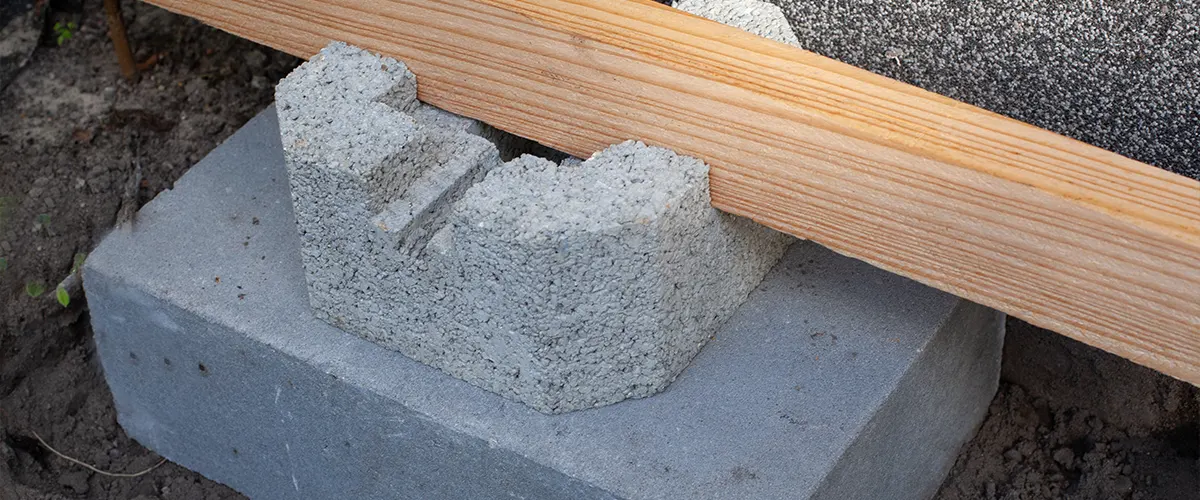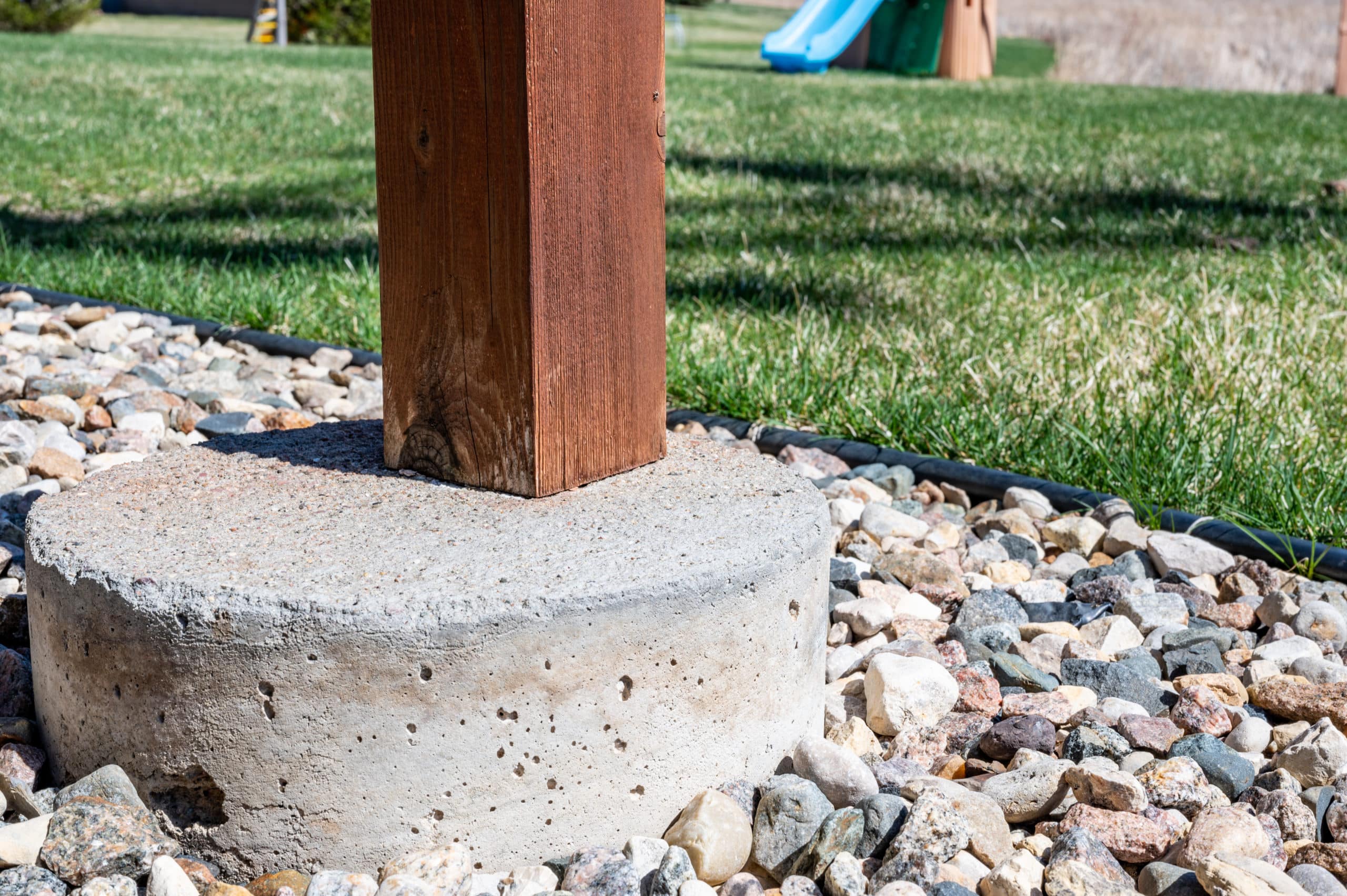Deck Footings 101: Browsing the Basics for a Stable and Long Lasting Deck
Deck Footings 101: Browsing the Basics for a Stable and Long Lasting Deck
Blog Article
Choosing the Right Deck Footings for Security and Durability
The longevity and security of your deck depend greatly on the type of footings you choose, as they offer the essential support and security to withstand the test of time. In this conversation, we will certainly discover the different types of deck footings, take into consideration the essential aspects to consider when making a choice, and delve into the pros and cons of various alternatives.
Kinds Of Deck Footings
These grounds are composed of a round hole filled up with concrete, which supplies a strong structure for the deck blog posts. Concrete pier footings are reasonably very easy to mount and supply excellent stability, making them a prominent choice for lots of deck projects.
These grounds are mounted by screwing them right into the ground, which creates a safe structure for the deck. They likewise enable for easy change and progressing of the deck if needed.
Conversely, some builders select precast concrete footings. These grounds are made from sturdy concrete and can be found in different shapes and dimensions to accommodate various deck designs. Precast concrete footings are practical to install and give a steady base for the deck framework.
Ultimately, one more alternative is the post-in-anchor footing system. This kind of footing entails driving a metal anchor into the ground and affixing it to the deck blog post. It offers versatility in regards to positioning the deck blog posts and appropriates for decks with light-weight structures.
When picking the ideal type of deck footing, it is important to take into consideration elements such as dirt conditions, deck lots, and local building ordinance (Deck Footings). Consulting with a specialist specialist or architectural designer can aid make sure the suitable ground is selected for a secure and stable deck
Factors to Think About When Selecting Grounds
When selecting the proper grounds for a deck, it is important to carefully take into consideration various elements such as dirt problems, deck lots, and adherence to neighborhood building ordinance. These aspects play a significant role in guaranteeing the stability and longevity of the deck framework.
The kind of soil on which the deck will be built identifies the kind of footings needed. On the other hand, decks constructed on clay or expansive dirts might call for grounds that can fit the soil's propensity to broaden and contract.
Another essential variable is the deck load. The weight of the deck, consisting of the materials made use of and any possible real-time lots such as furniture or events, need to be thought about when picking footings. The grounds must be developed to bear the weight of the deck and disperse it equally to stop any architectural problems or failings.
Finally, adherence to local building regulations is vital. Building ordinance differ from region to area, and it is crucial to adhere to the specific demands established by the neighborhood authorities. Deck Footings. These codes make sure that the deck is constructed safely and fulfills the required criteria for architectural integrity and load-bearing capability
Concrete Grounds: Disadvantages and pros

Concrete footings provide a number of benefits and downsides when used as the structure for a deck. On the favorable side, concrete footings give exceptional stability and toughness. Concrete is a strong and stiff material that can support heavy loads and endure various weather. It additionally has a lengthy life expectancy, making it a trusted selection for long-lasting use.
Another advantage of concrete footings is their flexibility. They can be poured into different sizes and shapes to fit numerous deck designs and arrangements. Concrete footings can be customized to fit the details demands and needs of the deck framework.
However, there are additionally some disadvantages More about the author to utilizing concrete footings. This can boost the general expense of the deck project and might call for professional aid.

Helical Piers Vs. Sonotubes: Which Is Much better?
In thinking about the structure options for a deck, the contrast in between helical piers and sonotubes is crucial in figuring out the exceptional choice. They are turned right into the ground utilizing hydraulic machinery, offering a sturdy and secure structure for the deck.
When it involves security and toughness, helical piers have the upper hand. The helical plates on the piers produce a strong hold with the dirt, changing or stopping any kind of activity of the deck. This is especially beneficial in locations with unpredictable or changing dirt problems. Sonotubes, on the various other hand, depend solely on the concrete filling up for stability, which may not supply the same degree of toughness and resistance.
In regards to installation, helical piers are reasonably much easier and faster to mount compared to sonotubes. The hydraulic equipment made use of to twist the piers into the ground makes certain a fast and effective procedure. Sonotubes, on the other hand, require digging holes and pouring concrete, which can be lengthy and labor-intensive.
Additionally, helical piers are a more functional choice. They can be used my review here in various soil problems and can be readjusted or reinforced if needed. Sonotubes, on the other hand, may call for additional support, such as rebar, in specific soil problems or locations with high load demands.
Picking the Right Footings for Your Deck's Dimensions
For optimal structural stability, it is vital to meticulously choose the proper grounds that straighten with the measurements of your deck. The measurements of your deck, including its length, height, and width, play a significant function in figuring out the kind and size of footings needed.
When selecting footings for your deck, it is essential to think about the load-bearing ability of the soil. The weight of the deck, integrated with the weight of any kind of furnishings or people on it, puts in a considerable force on the footings (Deck Footings). It is important to choose footings that can appropriately sustain this weight without shifting or sinking over time.
Larger decks with greater measurements require bigger footings to provide enough stability and assistance. The shape of the grounds, whether they are round or square, depends on the design and format of the deck.
Final Thought
In conclusion, selecting the right deck grounds is important for making sure stability and durability. Aspects such as the sort of grounds, the deck's measurements, and the benefits and drawbacks of various choices need to be thought about. Concrete grounds offer stamina and long life, however might be much more lengthy and pricey to install. Helical piers and sonotubes have their own benefits and drawbacks. Eventually, picking the appropriate footings for your deck's details requirements is crucial for a lasting and successful framework.
These grounds are composed of a round opening loaded with concrete, which gives a strong structure for the deck messages. Concrete pier footings are relatively easy to install and provide exceptional security, making them a preferred choice for many deck projects.
Precast concrete grounds are hassle-free to mount and give a steady base for the deck framework.
It uses versatility in terms of placing the deck articles and my explanation is appropriate for decks with lightweight structures.
Concrete footings offer numerous benefits and negative aspects when made use of as the structure for a deck.
Report this page